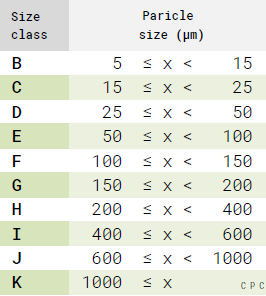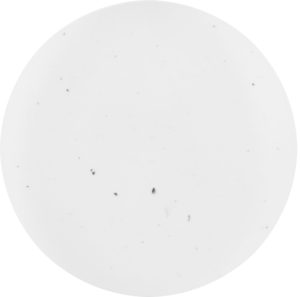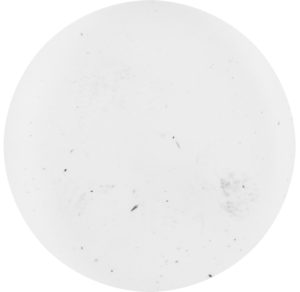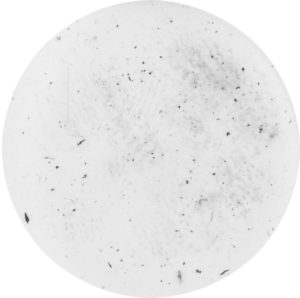Q: What is a particle trap?
A: Particle traps collect particles from the environment to allow their analysis. Particles traps utilize an adhesive pad with a usual diameter of 47 mm. Particles landing on the adhesive pad are stuck and likely remain entrapped until the analysis.
Q: What does the analysis of particle traps cover?
A: Particle traps are primarily analyzed by optical microscopes to determine the number, dimensions and type of particles. Particles are then classified into size and type classes.
Q: What size and type classes are used?
A: Particle size* classes

* Particle size: the greatest possible perpendicular distance measured between two parallel lines touching the particle
Particle types classified by optical microscopy: metallic shiny, non-metallic, fibers. Metallic shiny particles are usually considered metallic, however, if the metallic origin needs to be confirmed, a scanning electron microscope might need to be applied.
Q: What is the result of the particle trap test?
A: The result of the analysis of a particle trap is a table or a weighted number. The table presents the number of particles in each size class (and type). One number might also represent the results by summarizing the number of all particles, weighted by a size class factor.
Numbers are always normalized to a specific time interval (and area).
Q: How to place and activate a particle trap ?
A: Particle traps should be placed on a horizontal surface. All data (like date and time of activation, place etc.) shall be marked on the trap prior to removing the cover to avoid excess contamination. Removing the cover activates the trap so this shall be the last performed action in the direct surroundings of the trap.
Q: For how long should a particle trap be exposed?
A: Exposure interval (time between activation and deactivation) might range from a few days up to 10 days or more. Results will be normalized to 7 days anyway. The longer the trap is exposed, the higher the particle occupancy of the trap. Too little occupancy will increase the measurement error, too high occupancy will hinder the optical analysis as too many particles will overlap.
What is the ideal occupancy? See the images below to get an idea. It is worth checking the trap 2-3 days after activation to prevent overexposure.
Checking the trap regularly will also reveal if someone has touched the surface and whether the presence of possible fingerprints ruined the test or not.
Make sure checking the trap does not artificially increase the amount of particles.
Q: How should a trap be deactivated?
A: First of all, close the trap with its own, clean cover. Deactivation is complete. Remove the trap from its position and make sure the cover is secured. Mark the date and time of deactivation.
Q: What to do if a fingerprint has appeared on the trap surface?
A: The active surface of the trap is sticky. People might want to check this by putting their fingers onto the surface.
As a result, fingerprints might appear in the trap. As traps are normally evaluated by automated optical microscope algorithms, the fingerprint will likely mess up the results. A manual correction is usually not an option in this case. It is recommended to restart the test with a new trap. (Still, the disturbed trap can also finish its planned exposure interval. This way if the lab finds the disturbed trap impossible to evaluate, a new trap is already being exposed at the original location.)
Q: How do normally and overexposed particle traps look like?

This particle trap can be safely evaluated: no significant amount of overlapping particles and fingerprints are visually observable. (Note that fibers are not visible in the image due to low resolution.) Further exposure might overload the trap.

The particle trap is not overexposed but grey stains are visible. It is likely that the trap surface was touched 2-3 times. The optical microscopic analysis of the trap might not be possible. It is worth restarting the test with a new trap.

The trap might be overexposed and contains many fingerprints. The automated optical analysis of the trap might be impossible.
